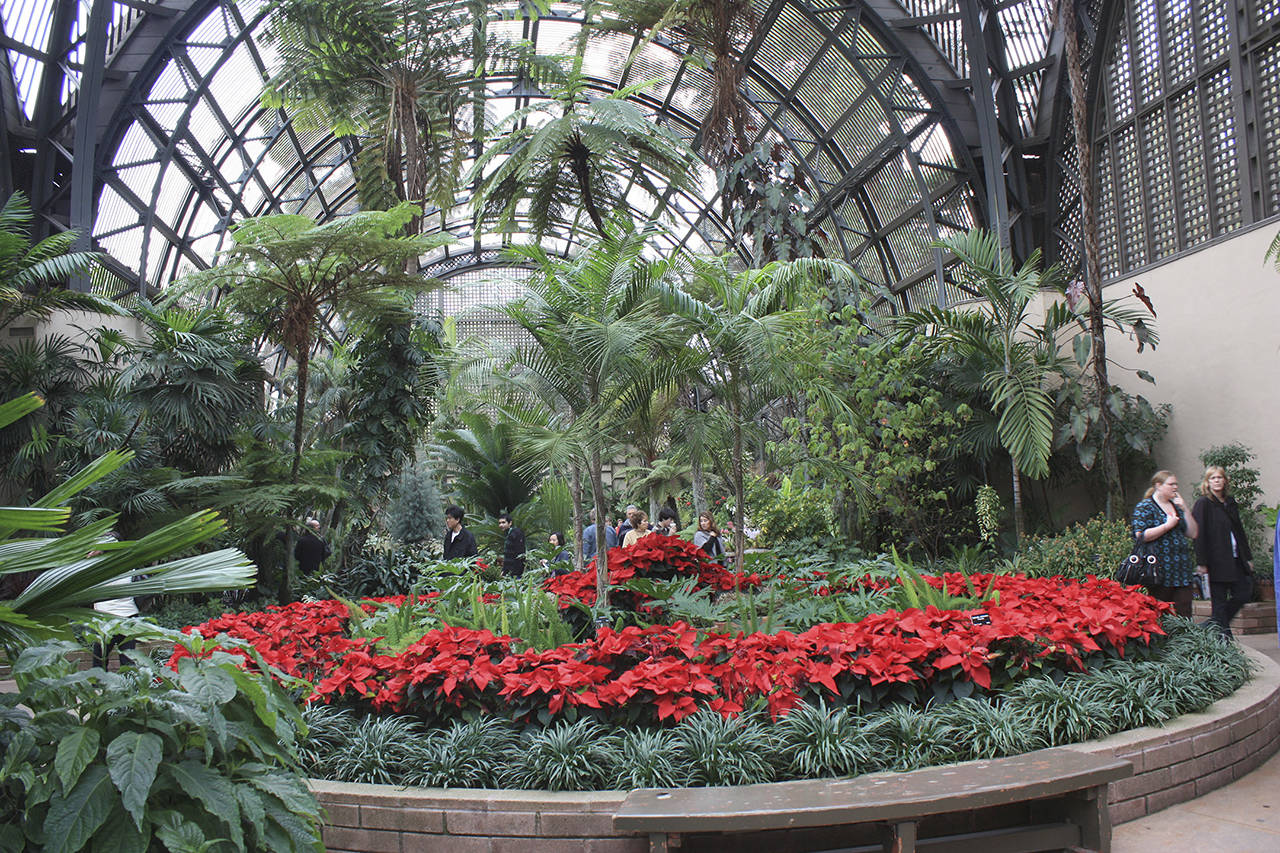By Dauna Koval
WSU Master Gardener
So now that the garden is as ready as it’s going to be for the winter, it’s time to head indoors and get ready for the holidays. There are some lovely plants to get excited about to fill up a greenhouse window. Here are a few of my favorites:
Christmas cactus
This group of cacti includes humidity-loving tropical plants native to Brazil. The white, pink, red, cream or yellow flowers normally appear in the fall, but indoor varieties have been developed to bloom around holidays, such as Christmas, Thanksgiving and lately Easter. Blooms can last two to four months.
These plants prefer temperatures between 60 and 70 degrees, moderate to bright light, frequent watering and high humidity. You can either spray daily or keep the plant pot on a tray full of pebbles and water.
To get it to rebloom each year: About six to eight weeks before the desired bloom time, help the plant to enter its dormancy by cutting back on water, light and temperature. Provide 12-14 hours of darkness and drop the temperature to 50-55 degrees. I’ve done this by putting my plants in the garage, and it worked just fine, but I have also just left it in my greenhouse window, using our long winter nights and reduced watering to bring dormancy, and they still bloom — usually!
Amaryllis
The amaryllis is a very fast-growing South African perennial bulb plant, great for kids. Look for white, red, pink and lots of new variations. The plant will usually give you four to six blooms per stalk, and they look great planted in groups in a flat bowl-shaped pot.
About six to eight weeks before you want blooms, replant in a heavy pot. (I sometimes put a heavy rock in the bottom to prevent the plant from tipping over as it gets taller.) Use good potting soil and pack around the bulb so that one-third of it is above the soil. Be sure to plant the bulb flat side down. Place in bright, indirect light and water sparingly. When growth appears, increase watering a bit and turn the pot daily so it will grow straight. (You may need a support to the bloom stalk.)
It’s so fast-growing, you can actually measure its progress daily. At age 4, my daughter did this with me, charting her measurements. As the buds came out, we photographed them daily and kept track of how long the flowers lasted — three weeks that time. (And my daughter is now a biology major in college.)
Anthurium
Native to American tropical rainforests, anthurium flowers consist of a shiny, heart-shaped bract surrounding a slender fleshy spike — usually red, rose, salmon or white. (This season, there are a few maroon flowering plants out.)
It prefers a humid environment with higher temperatures (80-90 degrees) and indirect light. Most plants can survive at lower temperatures, but will grow more slowly and produce fewer flowers.
It requires a well-draining soil. A mix of half potting soil and half small orchid bark is great. Water when the soil is dry, and don’t let roots sit in water. Soaking the whole pot in water once a month will keep the root ball hydrated. Don’t forget to mist daily.
With care, you should be able to keep this plant for several years. If you decide to keep it beyond the season, fertilize with one-quarter strength high-phosphorus formula once every one to three months.
Poinsettia
This is the quintessential Christmas plant. The past few years, there have been many colors and varieties available. There are over 50 shades of red, with various shapes of bract (the flower petals, which are really specialized leaves). You can even find chartreuse (a variety called Envy) and a lovely fall orange (called Autumn Leaves), as well as single, double and rose-shaped flowers. Many are available at grocery stores, but check nurseries for the more interesting varieties.
Poinsettias are finicky, short-lived plants; but if care is given, they will be beautiful for several weeks. Give them semi-cool, humid locations in bright, indirect light. Water thoroughly, but don’t let them sit in water-filled saucers. Keep out of drafts. For a challenge, you can try to keep them for another year, but I’ve found my efforts better spent on any of the above plants instead.
Even when our predictable rains discourage our presence in the garden, these indoor holiday plants offer lovely distractions.
Dauna Koval is “warmer weather” WSU Master Gardener, Class of 2016. She lives half time in Ocean Shores and half time in Renton, and she fully utilizes greenhouse windows in both places.



